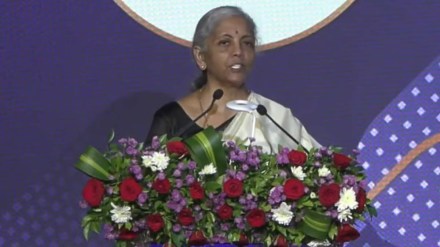The Unified Pension Scheme (UPS), which guarantees 50% of pay as a pension, will take care of the government employees’ interest as well as the taxpayers’ interest by not overburdening the future generations with a heavy pension bill, Finance Minister Nirmala Sitharaman said on Wednesday.
In the recent budget, the government announced UPS for central government employees effective April 1, 2025 but covers all staff who joined the National Pension System (NPS) since 2004. The state governments can also adopt UPS for their staff under NPS.
“It has the best elements, I would think of, Old Pension Scheme (OPS), and NPS, and it provides an assured pension after retirement, which is what OPS did, but here it also has other features,” Sitharaman said at the launch of NPS Vatsalya– a pension scheme for children below the age of 18 years. The minimum contribution for the scheme is Rs 1,000 annually and pension would accrue after 60 years of age.
The call for restoration of the unfunded OPS was resisted due to its adverse impact on the exchequer. Unlike OPS, UPS is fully funded (18.5% of pay by the government and 10% by employees). Under UPS, government staff would be entitled to 50% of the average last 12 months’ basic pay and dearness allowance as a pension, inflation-adjusted dearness relief, pension to the spouse upon death of the pensioner at 60% of last pension drawn and a minimum Rs 10,000 pension. All these benefits are nearly similar to OPS, without putting the exchequer to any major fiscal risk.
“What UPS does is take care of the government employees interest, and as finance minister, I have a responsibility to say this.. it also takes care of the taxpayers’ interest, so that there is no overburdening the future generations of a heavy pension bill,” Sitharaman said.
To soften the blow to the exchequer for the assured pension scheme for the staff recruited since 2004, the Centre will not reset the basic pension after each Pay Commission award, as was the case under the OPS, sources said. According to the FY25 Budget estimate, the Centre’s pension bill would be Rs 2.43 lakh crore or 5% of the total budget.
Under NPS Vatsalya, the minimum contribution for the scheme is Rs 1,000 annually and a pension would accrue after 60 years of age.
Sitharaman said that the NPS scheme has generated competitive returns since its inception. For the government sector, on average, NPS has given returns of 9.5% Compound Annual Growth Rate (CAGR) since its inception. For the non-government sector, the permitted asset classes have delivered CAGR returns of 14% in equity, 9.1% in corporate debt and 8.8% in Government Securities since inception of NPS.
